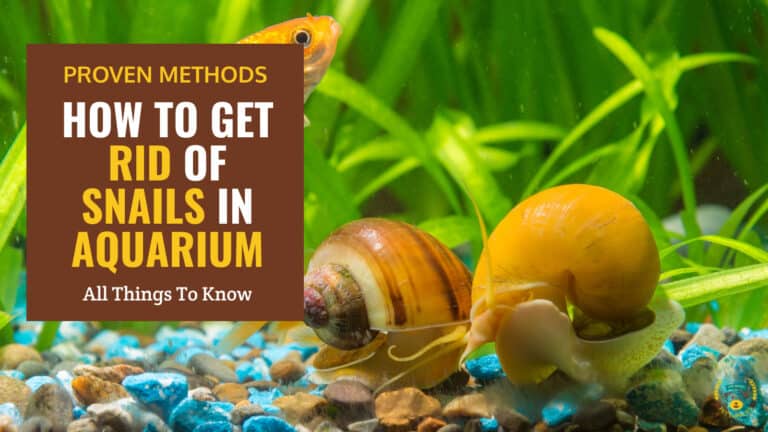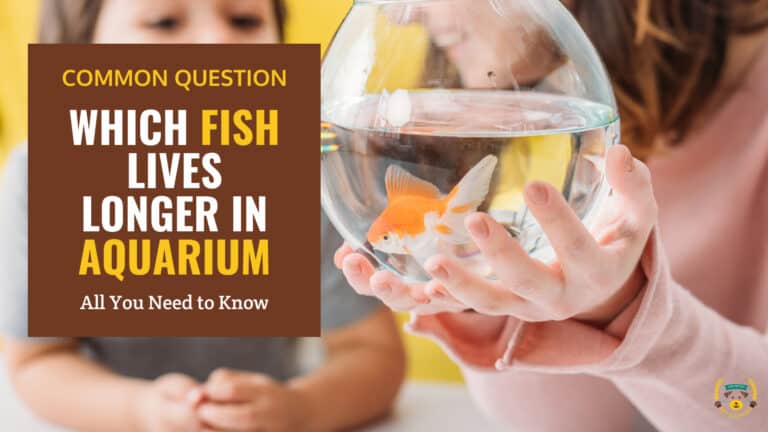How Much Does an Aquarium Cost? 2025 Fish Tank Price Guide
Last updated: January 22, 2024

Summary
- Initial setup costs for aquariums range from $50 to $800+.
- Filtration systems are priced between $10 and $500+.
- Heaters and thermometers may cost $35 to $250.
- Lighting can vary widely, starting at $40.
- Substrate and decor prices start at $1 per pound.
- Ongoing costs include water treatments, food, filter media, and electricity.
Setting up and maintaining an aquarium comes with a variety of upfront and recurring expenses. From the fish tank itself to electricity for equipment, costs add up quickly. Knowing general price ranges helps potential aquarists budget properly before bringing home their first fish.
This detailed guide provides an overview of the primary elements that impact overall fish tank costs. We will explore the main equipment, livestock, supplies, and utilities to factor into planning an aquarium - whether a small desktop model or an elaborately decorated show tank.
Advanced knowledge of both initial setup and ongoing maintenance costs assists hobbyists in selecting a realistic aquarium size and accessories suited to their budget and lifestyle.
- 1) Overview of Fish Tank Cost Considerations
- 2) Factors That Impact The Total Aquarium Expenses
- 3) Upfront Setup and Equipment Costs
- 4) Ongoing Maintenance Costs
- 5) Livestock and Plant Expenses
- 6) Total First-Year Expenses Breakdown
- 7) Saving on Supplies and Energy Costs
-
8)
Frequently Asked Questions
- 8.1) How much does it cost to run an aquarium on a monthly basis?
- 8.2) Can the type of fish affect my aquarium's maintenance costs?
- 8.3) Are there significant cost differences between freshwater and saltwater aquariums?
- 8.4) How often will I need to replace filter media and what's the cost?
- 8.5) What are the hidden costs I should be aware of?
- 8.6) Is it more cost-effective to buy aquarium supplies in bulk?
- 8.7) How can I budget for the unexpected?
- 9) Final Thoughts
Overview of Fish Tank Cost Considerations

The main components that determine the total aquarium costs include:
- Fish tank purchase price
- Filtration system(s)
- Heating and monitoring equipment
- Substrate, decor, and plants
- Live fish, invertebrates and plants
- Water supplements and food
- Filter media replacements
- Electricity estimate
With numerous choices and add-ons available for customizing aquarium systems, expenses can range widely depending on individual needs and preferences.
Factors That Impact The Total Aquarium Expenses
Several key factors cause aquarium budgets to vary significantly; these include the following:
- Aquarium size - small vs large tanks
- Saltwater vs freshwater livestock and care
- Natural vs artificial decor and plants
- Level of equipment automation
- Energy requirements of components
- Performing own maintenance vs outsourcing
In subsequent sections, we will explore these cost layers in greater depth, including breakdowns for small, medium and large aquarium setups.
Upfront Setup and Equipment Costs
The initial investment into an aquarium system includes buying all fundamental components and any desired decorative accessories and livestock. Expect prices between $200 to $5,000 or more depending on the tank size and features.

Fish Tank Itself - $50 - $800+
A critical piece of the initial investment is the aquarium itself. Smaller tanks might only set you back around $50, but as they scale up in size, so too does the price, with some large tanks exceeding $800 and bespoke builds going even higher.
When selecting the ideal aquarium, it's not only about finding the right size but also choosing a tank that will meet your specific needs for aesthetics and functionality. Check our guide to the best fish tanks available on the market that will enhance your interior space and provide a nurturing environment for your aquatic life throughout the year.
Filtration System - $10 - $500+
Filtering through the myriad of filtration options reveals a range of prices. You could opt for a modest sponge filter starting around $10, perfect for smaller setups, or scale up to high-capacity canister filters for larger tanks which could cost $400 or more.
Advanced setups, such as those required for sizable saltwater reefs, may need the comprehensive filtration that wet/dry sump systems provide, potentially costing $500 upwards.
Heaters and Thermometers - $35 - $250
Heating systems and thermometers are non-negotiable for a stable aquatic environment. Heater prices flex from $25 to $200 based on wattage and quality, and when paired with reliable thermometers – digital ones ranging from $10 to $50 – you can ensure the comfort of your tank's inhabitants.
Lighting - $40 - $200+
The illumination of your tank plays a vital role, especially when tending to flora or displaying the vivid colors of your fish and corals. For basic setups, adequate lighting solutions start at $40, but for high-intensity needs such as planted or reef tanks, expect the lighting costs to ascend to $200 and beyond.
Decor and Substrate - $1/lbs And Upwards
Substrate and decor are the final touches that transform a tank from an enclosure to an ecosystem. Costs vary dramatically, from the budget-friendly sands and gravels at $1 per pound to premium decorative elements that may cost several dollars more per pound. These aesthetic choices double as functional aspects that can enhance the habitat and health of your aquatic life.
Through careful planning and consideration of these essentials, you can create an immersive aquatic world while remaining grounded in your budget.
Ongoing Maintenance Costs

Ongoing maintenance is crucial to ensure the health and vitality of the aquatic life within your aquarium. These recurrent expenses can have a significant impact on the long-term cost of aquarium keeping.
Water Changes and Chemicals
Regular water changes are vital for maintaining water quality and the health of your aquarium's inhabitants. Understanding hazy water in your aquarium can help you tackle one of the common challenges that aquarists face, ensuring your aquatic environment remains pristine for your fish and plants.
Cost factors include:
- Conditioning Chemicals: Prices vary for dechlorinators and water conditioners used during each water change.
- Test Kits: To ensure proper water quality, testing kits for pH, ammonia, nitrite, and nitrate levels are essential, with costs depending on brand and complexity.
Fish Food and Supplements

The costs for fish food and supplements can vary, depending on the types of inhabitants and their specific dietary requirements. Staple diets, primarily composed of flakes and pellets, are the foundation of fish nutrition. These can range in price, but opting for higher quality ( pricier) brands can improve fish health and simultaneously reduce tank waste, leading to better water conditions and fewer required water changes.
Specialized foods cater to the unique needs of certain species. These may include frozen, live, or freeze-dried foods for carnivorous and exotic fish that require more than the staple diet. Although these specialized foods tend to be more expensive, they are vital in providing a balanced diet and maintaining the well-being of specialized species.
Additionally, dietary supplements such as vitamins and minerals may be necessary, especially for the health of more delicate or demanding species. Investing in these supplements ensures your aquatic pets remain in peak condition, but it will add to the ongoing cost of your aquarium maintenance.
Filter Media Replacements
Filter media, such as activated charcoal, sponges, or ceramic rings, must be replaced periodically to maintain filter efficiency. The frequency of replacement and the type of media required can affect expenses:
- Mechanical media typically needs more frequent replacement compared to biological media.
- Chemical media like activated carbon should be replaced monthly to ensure the absorption of impurities from the water.
Equipment Upgrades and Replacements

Aquarium components such as pumps and powerheads, which facilitate crucial water movement and filtration, will inevitably degrade over time. The need to replace or upgrade these elements emerges as part of the normal wear and tear of aquarium operation. While the initial cost of high-quality, durable models might be higher, these can provide increased longevity and potentially reduce the frequency of replacements.
Understanding the intricacies of aquarium pumps and making the right selection can be a complex task, especially when factoring in requirements like tank size, desired flow rate, and quiet operation. Investing in the right pump goes beyond just cost; it ensures the effective circulation and filtration vital for a thriving aquatic environment. To help you navigate through the options available, check into our essential picks of aquarium water pump guide.
Heating units and lighting systems also have a finite operational lifespan. With advancements in technology, newer models are often more energy-efficient and longer-lasting than their predecessors. This presents an opportunity for aquarists to invest in upgrades that, while possibly costly upfront, could result in lower energy consumption and savings on utility bills in the long term. It's a balance of immediate costs against future savings that each aquarium hobbyist needs to evaluate.
Electricity Bill Increases
Aquariums contribute to your electricity bill through lighting, heating, and filter operation. To mitigate costs, you may do the following:
- LED Lighting: Use LED lights for long-term energy savings.
- Equipment Timers: Use timers to control lighting and non-essential equipment to run only as needed.
While ongoing maintenance costs can accumulate, proactive management can help minimize expenses and ensure a thriving aquatic ecosystem. Remember, investing in quality food, maintaining equipment, and keeping consistent water quality is not just a cost—it’s an investment in the health and longevity of your aquarium's ecosystem.
Livestock and Plant Expenses
Creating a vibrant, thriving underwater ecosystem involves more than just the initial setup of an aquarium; it requires careful selection and acquisition of diverse livestock and plants. The expenses related to these living components can vary greatly, and understanding the costs involved is essential for effective budgeting and maintenance.

Cost Per Fish
The price of fish ranges based on species, rarity, and size. Popular community fish such as tetras and guppies are often cost-effective, providing an economical way to add life and color to your tank. On the other hand, exotic or rare species like discus or arowanas come with a heftier price tag due to their specialized care requirements and less common availability.
Invertebrate Prices
Invertebrates, including snails, shrimp, and crabs, can play critical roles in the tank ecosystem, from algae-eating to substrate aeration.
These creatures generally cost less than fish but can still add up if you are creating a diverse invertebrate habitat. Some specialized species, such as the cherry shrimp, are sought-after for their vibrant coloration and may command higher prices.
Aquatic Plant Prices
Aquatic plants not only enhance the aesthetic appeal of an aquarium but also contribute to the ecological balance by producing oxygen and providing habitat. The cost associated with aquatic plants will vary depending on the species' growth rate, care requirements, and rarity.
Hardy, fast-growing plants like anacharis are usually more affordable than delicate or slow-growing species like Madagascar lace leaf.
Investing in a combination of livestock and plants enriched with diversity ensures a dynamic aquarium ecosystem, mimicking natural habitats. Maintaining a strategic approach to purchasing, by prioritizing species that suit your level of experience and commitment, will ensure that both the health of the ecosystem and your budget are sustained.
Total First-Year Expenses Breakdown
In this section, our goal is to help you budget effectively and make informed decisions by outlining the total first-year expenses you can expect for small, medium, and large aquarium setups.
Small Aquariums Under 30 Gallons
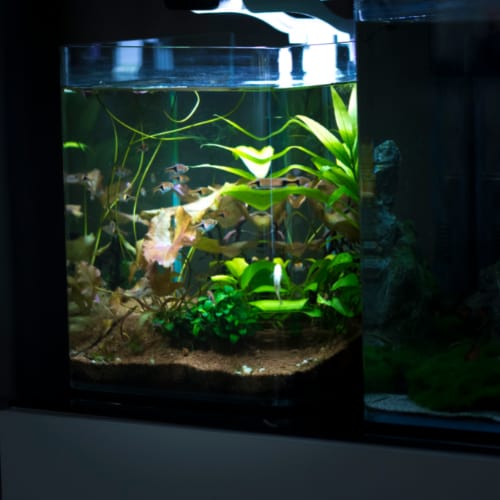
For a small aquarium, the first-year total cost can range from $345 to $865. These expenses can be divided as follows:
Initial Investment:
- Tank and Stand: Ranging from $40 to $150 depending on quality and style.
- Filtration System: Approximately $20 to $50.
- Heater and Thermometer: Combined costs of around $20 to $35.
- Lighting: LED setups can cost between $25 to $100.
- Decor and Substrate: Roughly $50 to $100 in total.
- Initial Livestock: Varies widely, but set aside at least $30 to $60.
Yearly Maintenance:
- Food and Supplements: Around $60 to $120 annually.
- Chemicals and Testing Kits: Approximately $50 to $100.
- Utilities: Incremental increase in electricity, potentially $50 to $150 per year.
Medium Aquariums 30-75 Gallons
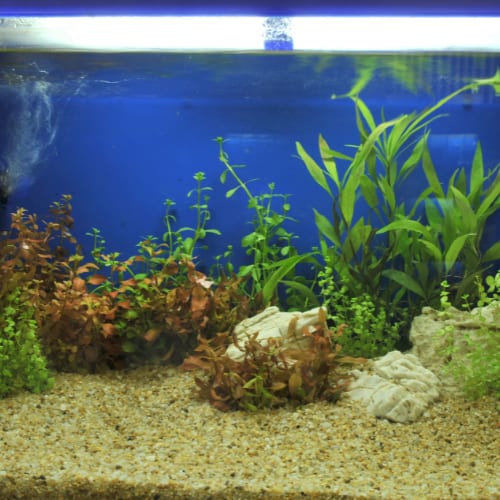
Medium aquarium setups can see first-year costs ranging from $830 to $2,260. Here are the detailed expenses to expect:
Initial Investment:
- Tank and Stand: Costs escalate to between $200 and $500.
- Filtration System: Higher capacity filters range from $50 to $150.
- Heater and Thermometer: Average between $30 and $60.
- Lighting: Enhanced systems can be $50 to $200 or more.
- Decor and Substrate: Expect to pay $100 to $200.
- Initial Livestock: Budget at least $100 to $300 for a variety of species.
Yearly Maintenance:
- Food and Supplements: Annual expenditure of $100 to $250.
- Chemicals and Testing Kits: About $100 to $200 per year.
- Utilities: Increased by larger volume and equipment, adding about $100 to $300 annually.
Large Aquarium Over 75 Gallons
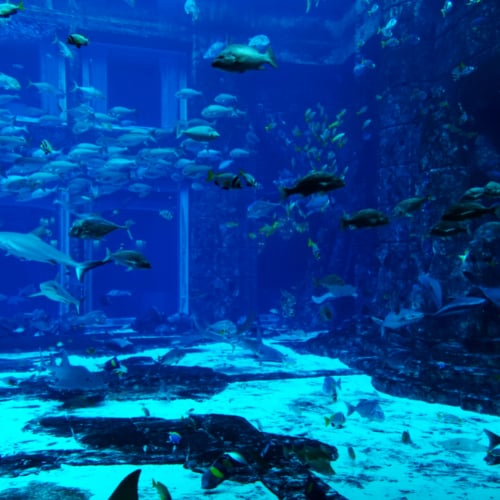
For a large aquarium, the first year may demand a financial commitment from approximately $1,900 to $5,800, divided as follows:
Initial Investment:
- Tank and Stand: A substantial investment of $500 to $2,000.
- Filtration System: More advanced systems from $150 to $400.
- Heater and Thermometer: Costing between $50 and $100.
- Lighting: High-end lighting solutions can be $200 to $500 or more.
- Decor and Substrate: This could reach $200 to $500.
- Initial Livestock: A diverse array of fish and plants may total $200 to $600.
Yearly Maintenance:
- Food and Supplements: About $150 to $300.
- Chemicals and Testing Kits: Expected to be in the range of $150 to $300.
- Utilities: Significant bump in utility bills, potentially $200 to $600 per year.
It is crucial to consider that these are general estimates. Your investment could fluctuate based on personal preferences, the complexity of the ecosystem you plan to create, and the unscheduled costs that arise from unforeseen circumstances. Nonetheless, understanding these benchmarks is a pivotal step in preparing for the financial aspect of your aquarist pursuits.
Saving on Supplies and Energy Costs
As seen in the previous sections above, when investing in a new fish tank, the total expenses can vary greatly based on multiple factors. The prices can add up to thousands of dollars. There are, however, a few ways to help you save on the costs on the equipment you use as well as the annual energy costs.
Buying Used Equipment
Acquiring used aquarium gear could significantly diminish your cost outlay. Dive deep into local classifieds, online marketplaces, and aquarium hobbyist forums to secure high-quality, pre-loved equipment.
When buying second-hand, inspect items thoroughly for wear, leaks, or electrical issues. Consider the savings on items like tanks, stands, and even lighting systems to tilt your budget back into balance.
Energy-Efficient Equipment

Investing in energy-efficient equipment plays a long game with your finances. Seek out LED lighting fixtures that deliver optimal illumination with a fraction of the energy draw. Opt for heaters with precise thermostats to minimize unnecessary heating cycles. Modern pumps and wave-makers with DC motors also offer significant reductions in power consumption, and their adjustable flow rates allow for fine-tuning your system's energy usage.
Performing Maintenance Yourself
Roll up your sleeves to save costs significantly by taking on maintenance tasks yourself. Basic aquarium upkeep skills are straightforward to develop with countless tutorials available.
Mastering water chemistry balance, cleaning filters, performing water changes, and general tank cleanup keeps your ecosystem thriving. This self-sufficiency not only saves money that would be spent on professional services but also enhances your understanding and enjoyment of the hobby.
Understanding the intricacies of regular aquarium maintenance can seem daunting for newcomers. Yet, knowing how to clean a fish tank is crucial for the well-being of your aquatic pets.
A well-maintained tank not only offers a healthier environment for your fish but also prevents common issues such as algae build-up and cloudy water. It's vital to stay on top of tasks such as scraping algae, vacuuming gravel, and ensuring proper water conditions to ensure your fish thrive
Frequently Asked Questions
Aquarium enthusiasts often grapple with numerous queries regarding the cost implications of setting up and maintaining their aquatic havens. Here, we address some of the most frequent financial inquiries to simplify the economic dimensions of aquarium ownership.
How much does it cost to run an aquarium on a monthly basis?
Monthly operating expenses for an aquarium can vary significantly based on the size of the tank, the types of fish, and the complexity of the system. A general estimate ranges from $10 to $50 for small tanks and can escalate to $100 or more for larger, more intricate setups.
These figures encompass food, supplements, utility cost increases, and routine maintenance supplies.
Can the type of fish affect my aquarium's maintenance costs?
Absolutely. The species of fish you choose to inhabit your aquarium can influence not only the ecosystem but also the associated costs. Saltwater fish, for example, typically require more elaborate setups and specific water conditions compared to freshwater fish, which can lead to higher expenditures on equipment and consumables.
Are there significant cost differences between freshwater and saltwater aquariums?
Saltwater aquariums are generally more costly to establish and maintain than freshwater tanks due to the need for specialized equipment, such as protein skimmers, and the higher price of saltwater fish and coral. Freshwater setups might be considered budget-friendlier options, especially for beginners in the hobby.
How often will I need to replace filter media and what's the cost?
Replacement frequency for filter media depends on the type of filtration system and the bio load of your aquarium. On average, you should anticipate changing mechanical media every month, with chemical media like activated carbon every 2-3 months, and biological media potentially less frequently. Costs for filter media replacements can range from $5 to $30 per change, but the actual figure will hinge on the size and type of media required.
While planning, it is wise to factor in potential hidden or unanticipated costs such as emergency treatments for fish, replacement parts for equipment that may malfunction and increased utility bills due to additional equipment like UV sterilizers or cooling units not accounted for during the initial budgeting.
Is it more cost-effective to buy aquarium supplies in bulk?
Purchasing supplies like fish food, water conditioners, and test kits in bulk can be cost-effective in the long run, particularly for staple items that have a long shelf life and will definitely be used.
Bulk purchases often come with price reductions, but it is important to balance quantity with the shelf life to prevent waste.
How can I budget for the unexpected?
Creating a contingency fund is a prudent way to budget for unforeseen aquarium-related expenses. This fund should ideally cover the cost of any emergency equipment replacements, veterinary care for fish, or significant maintenance issues that may arise unexpectedly.
Final Thoughts
Embarking on aquarium ownership is an investment in both serenity and ecological beauty. Initial setup costs, coupled with long-term maintenance, require budgeting and commitment, yet the endeavor is rewarding beyond the expense.
Smart choices like energy-efficient equipment, careful purchasing, and proactive maintenance can mitigate expenses while maintaining a thriving aquatic ecosystem. The peace of a well-kept aquarium, the educational value it provides, and the connection to the natural world offer immeasurable rewards.
We hope this article provided answers to all the questions you had about aquarium maintenance and costs. If you still have any questions, please leave a comment below.


